What is a Coir Mat and Why You Need One?
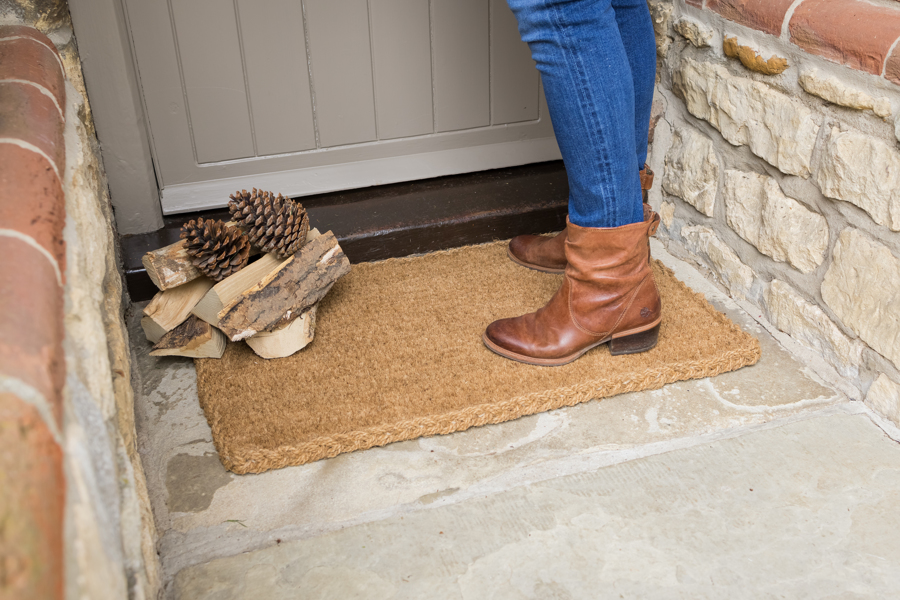
Crafted from the husks of coconuts, coir mats bring with them a unique mix of tradition, utility, and environmental consciousness. The term 'coir' originates from the Tamil and Malayalam languages, meaning 'rope' or 'cord' – a nod to the durable nature of the fibres. The long, brown fibres of the coconut husk, known for their strength and flexibility, are expertly woven into these mats. Unlike their often non-biodegradable counterparts, coir mats offer an environmentally safer option. These mats are constructed by tightly packing the fibres into a strong backing, forming a tough surface adept at trapping dirt, debris, and moisture, making them an ideal choice for doorways.
At Coir Mats, we pride ourselves on our 30+ years of expertise in this industry, and we know that understanding the significance of a coir door mat starts with appreciating its unique composition and the benefits it brings to every household. In this article, we'll look into the world of coir mats, exploring their advantages and understanding why they're an essential addition to your home.
A Brief History of Coir
The history of coir stretches back to ancient times, with the first recorded usage being in India in the Ramanya period (8th century BC–3rd century AD). The Austronesian people were also among the first in the world known to use it, primarily for house and boat building, with Indian sailors navigating to the Gulf of Arabia were also known to have used it as the rope on their ships.
The manufacturing of coir evolved into a big industry in the UK in the mid-19th century, after Captain Widely, alongside Captain Logan and Thomas Treloar, founded the carpet firms of Treloar & Sons in London. Using coir for floor coverings marked a significant milestone in coir history, and from there has continued into the thriving industry it remains today.
Composition and Manufacturing
The unique appeal of coir mats lies in their natural composition and manufacturing process, which combine to create a product of exceptional quality and sustainability.
What is Coir Matting Made Of?
Crafted from natural coconut fibres, coir matting utilizes the outer part of the coconut husk, a material often discarded as waste in other industries. These fibres are renowned for their robustness and resilience, qualities that make them perfectly suited for door mats exposed to heavy foot traffic. The natural texture of these coconut fibres is rough and bristly, which aids in effectively scraping off dirt and moisture from footwear.
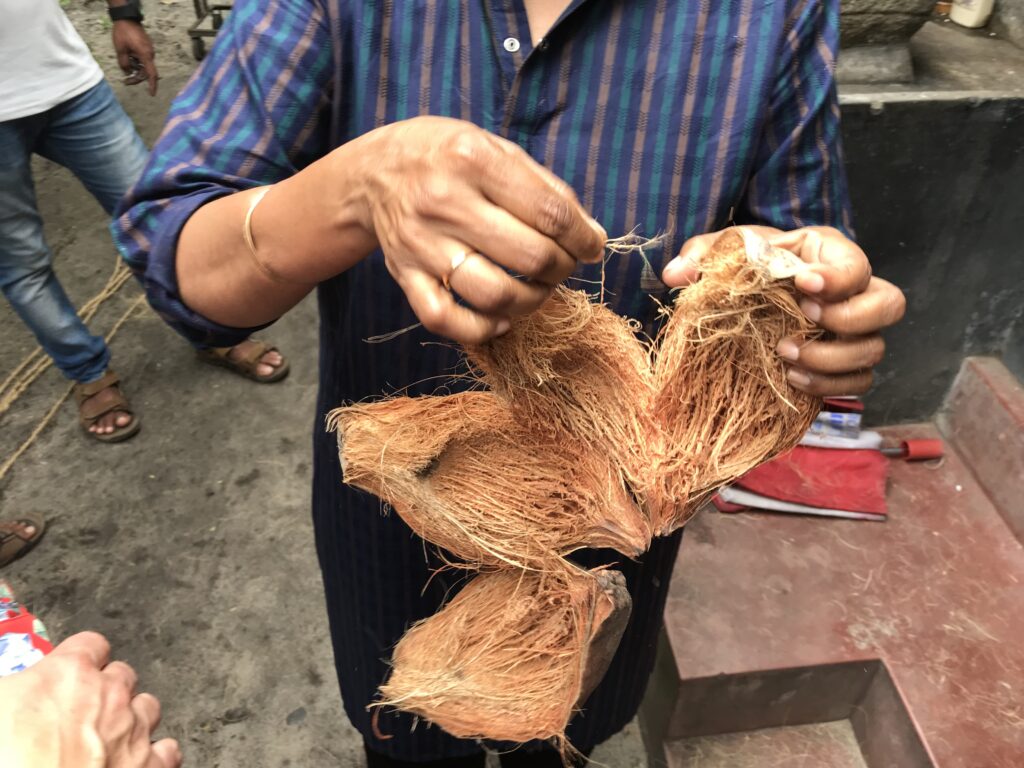
Processing Coconuts into Coir
The journey of turning coconuts into coir starts with the harvesting of coconuts. Once collected, the husks are separated from the edible part of the coconut. These husks are then soaked in water for a period, a process known as retting, which helps in loosening the fibres. After retting, the fibres are extracted and cleaned. This process not only separates the long, more durable fibres (which are used for making mats) but also filters out shorter fibres and pith, which can be used for other purposes.
Manufacturing Process of Coir Mats
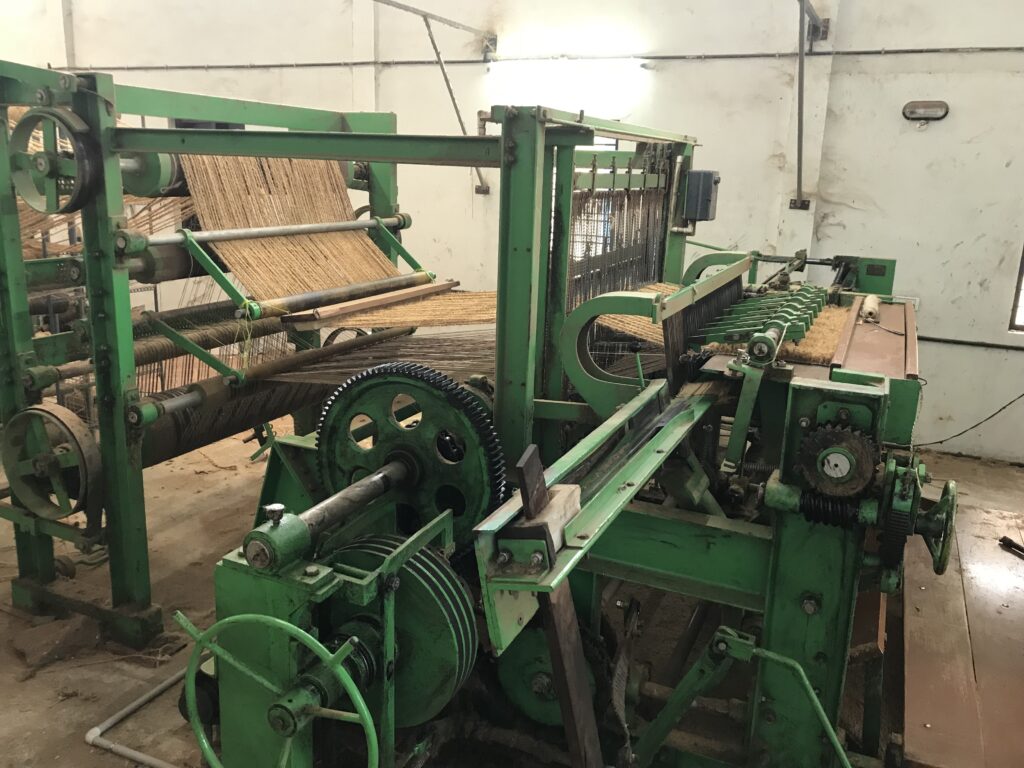
The manufacturing of coir matting involves several steps. The cleaned and dried coir fibres are first spun into yarn. This yarn is then woven, tufted, or moulded into mats of various shapes and sizes. Depending on the design, natural dyes may be used to add patterns and colours to the mats, boosting their aesthetic appeal. The final step involves trimming the mats to ensure uniformity and quality. This entire process emphasises sustainability, as it utilises a natural byproduct and involves minimal chemical treatments, aligning with eco-friendly manufacturing practices.
Types and Uses of Coir Mats
Favoured for their versatility and durability, coir mats come in a range of types, each designed to cater to different aspects of household and commercial use. In the following sections, we will explore the various forms of coir matting available and how each serves its unique purpose in improving both functionality and aesthetics in any setting.
Different Types of Coir Mats
Coir door mats come in various types, each serving unique purposes while adding a touch of style and functionality to your home or business environment. Below, we explore some of the coir mat types available:
Standard Coir Mats
Made from natural coconut fibres, these mats are inherently durable and adept at trapping dirt and moisture, making the standard mats ideal for everyday use in both residential and commercial settings. Their straightforward design and natural colouring lend a classic and unobtrusive look, seamlessly blending with various decor styles.
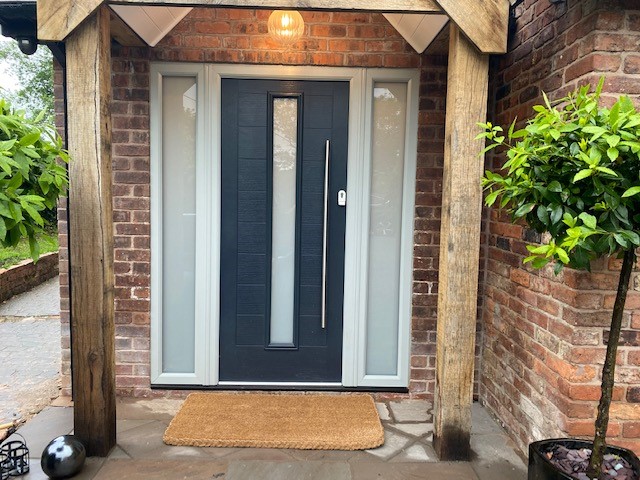
Hand-Stitched Coir Mats
As a good example of quality craftsmanship, hand-stitched coir mats offer a blend of traditional techniques and durability. These mats are crafted with precision, ensuring each stitch adds to their toughness and longevity. Ideal for high-traffic areas, hand-stitched mats provide a rustic yet elegant appeal, making them a popular choice for those seeking a combination of durability and aesthetic charm.
PVC-Backed Coir Mats
These mats have a PVC backing that adds extra stability and makes the mat easy to trim to fit, an important consideration if you would like to install coir matting yourself. The PVC backing also helps in trapping dirt and moisture, making them suitable for heavy footfall.
Personalised Coir Mats
Whether it's a family name, a welcome message, or a custom design, personalised mats let you express your personality with a personal touch while keeping the practical purpose of keeping dirt out. They are perfect for gifting or for adding that personal touch to your entrance.
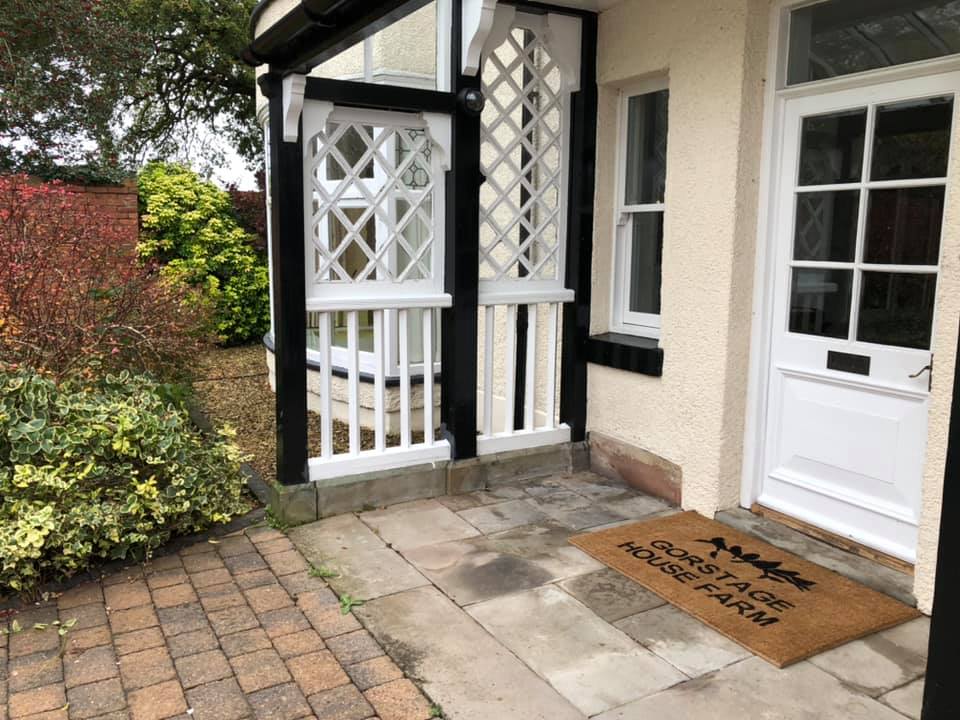
Rubber-Moulded Coir Mats
These mats combine coir with rubber, where the coir is moulded into a rubber base. This combination provides excellent scraping properties and durability, making them ideal for outdoor use.
Cut-to-Size Coir Mats
Offering versatility and convenience, cut-to-size coir mats can be tailored to fit any space perfectly. Whether you have an irregularly shaped entrance or need a specific size to complement your décor, these mats can be customised to meet your requirements. This adaptability makes them an ideal choice for both residential and commercial properties.
Coloured Coir Mats
If you're looking to bring vibrancy and life to your doorway, coloured coir mats could be just the ticket. Available in a wide range of colours, they can easily complement your home’s exterior or interior colour scheme. These mats are dyed using eco-friendly dyes, ensuring that they are safe for the environment while adding a pop of colour to your entrance.
Printed Coir Mats
A fantastic way to showcase intricate designs, patterns, or messages. With advanced printing techniques, printed coir mats can feature anything from intricate floral patterns to modern geometric designs, making them a stylish addition to any doorstep. They are ideal for those who want to make a statement with their doorstep décor.
Logo Coir Mats
For businesses looking to enhance their branding right at their doorway, logo coir mats are an ideal solution for business entrances. These mats can be customised with a company logo, slogan, or brand colours, offering a professional touch while serving the practical purpose of keeping interiors clean. They are popular in commercial settings, such as offices, restaurants, and retail stores, where brand visibility is key.
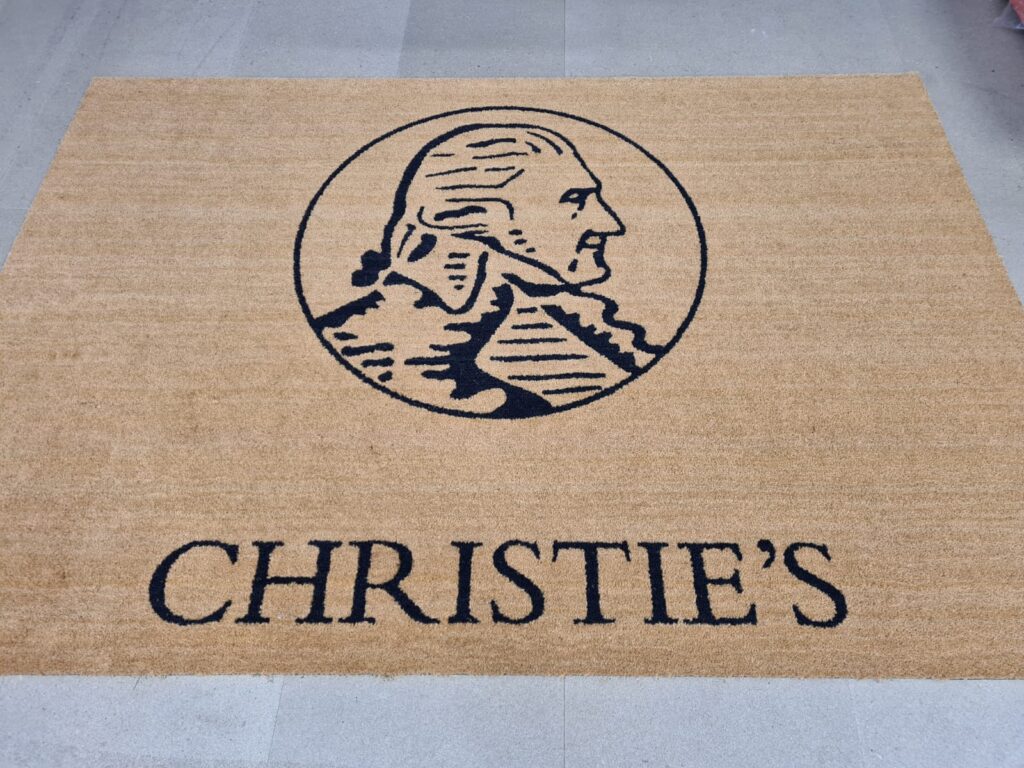
Primary Uses of Coir Mats
Coir matting helps in both domestic and environmental arenas due to its versatility and natural properties. One of the most familiar uses of coir mats is in welcoming visitors to homes. These mats serve as the first point of contact for guests, offering a warm greeting, while also capturing dirt and moisture from shoes, and protecting interior flooring.
Beyond residential settings, coir matting also plays a role in environmental protection. They are used in various ecological projects due to their biodegradable nature and durability. These mats assist in stabilising soils, especially in areas prone to erosion. By holding the soil in place, coir mats provide a stable platform for vegetation to take root, thereby protecting the land and contributing to ecological restoration.
In summary, a coir doormat isn't just easy on the eye and practical for homes but is also instrumental in environmental protection efforts. Their ability to combine functionality with eco-friendliness makes them invaluable in both domestic and environmental applications.
Specialised Uses in Various Settings
It's important to note that coir mats offer a diverse range of applications tailored to different environments. In commercial settings, like offices and retail spaces, heavy-duty coir mats are employed for their toughness and ability to withstand high foot traffic. For residential use, coir mats come in various designs – ranging from simple, elegant textures to more elaborate patterns, suitable for improving the appearance of entranceways. This versatility underscores the indispensable nature of coir mats in various settings, underlining their functionality and adaptability.
Mat Wells and Recesses
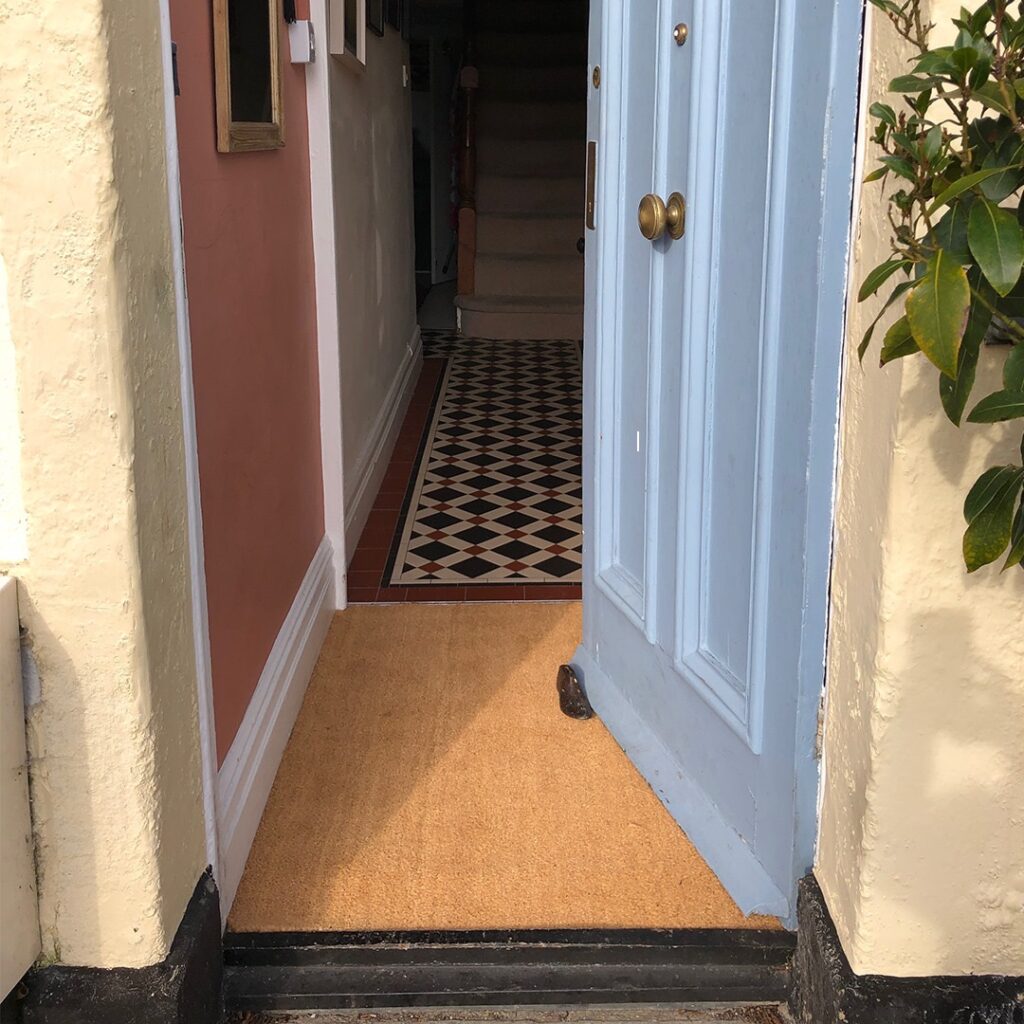
Coir mats excel in mat wells and recesses, areas commonly found in both residential and commercial entrances. The cut-to-size mats can be tailored to fit snugly into these recessed spaces, ensuring a seamless and secure installation. The tough and dense nature of coir fibres makes them ideal for high-traffic areas, effectively trapping dirt and moisture while maintaining their shape and integrity.
Benefits of Coir Matting
There are numerous benefits that come with coir matting:
Durability – Primarily due to the tough natural coco fibres sourced from coconut husks. These fibres ensure that the mats withstand heavy foot traffic and harsh weather conditions, making them a long-lasting choice for any home.
Water absorption – These mats have exceptional water absorbency, due to the porous nature of the coconut fibres. This characteristic ensures that moisture and dirt are effectively trapped, keeping your home clean and dry.
Affordability – offering high-quality, long-lasting utility without a hefty price tag. Lastly, the use of natural materials in their construction makes them an environmentally friendly choice. By integrating these natural elements, coir mats not only serve a practical purpose but also contribute to a more sustainable lifestyle.
Practical Aspects of Coir Mats
Coir mats offer a mix of practicality and resilience, making them a superb choice for any home. Renowned for their hard-wearing nature, these mats efficiently trap dirt and moisture, keeping your indoor spaces clean and dry.
Suitability for Different Environments
One would find that the versatility of coir doormats is unmatched, making them suitable for a wide range of environments. For indoor use, these mats provide an excellent first line of defence against dirt, with their tough bristles efficiently scraping off debris from shoes, and keeping your floors clean. This makes them ideal entrance mats in homes and businesses alike.
When it comes to outdoor use, coir mats look great. Because they are so absorbent, when then they are used outdoors it is important to shelter them so that they do not become waterlogged. But a small amount of moisture from shoes is fine, the mat will dry out over time and continue to perform its job brilliantly. If the mat does become very wet, it should be lifted and allowed to dry out thoroughly, as long periods of being wet will cause the mat to rot. It is a completely natural material after all. The natural durability of coir matting, coupled with its ability to handle moisture effectively, makes it a practical and robust choice for any entrance.
Maintenance and Care
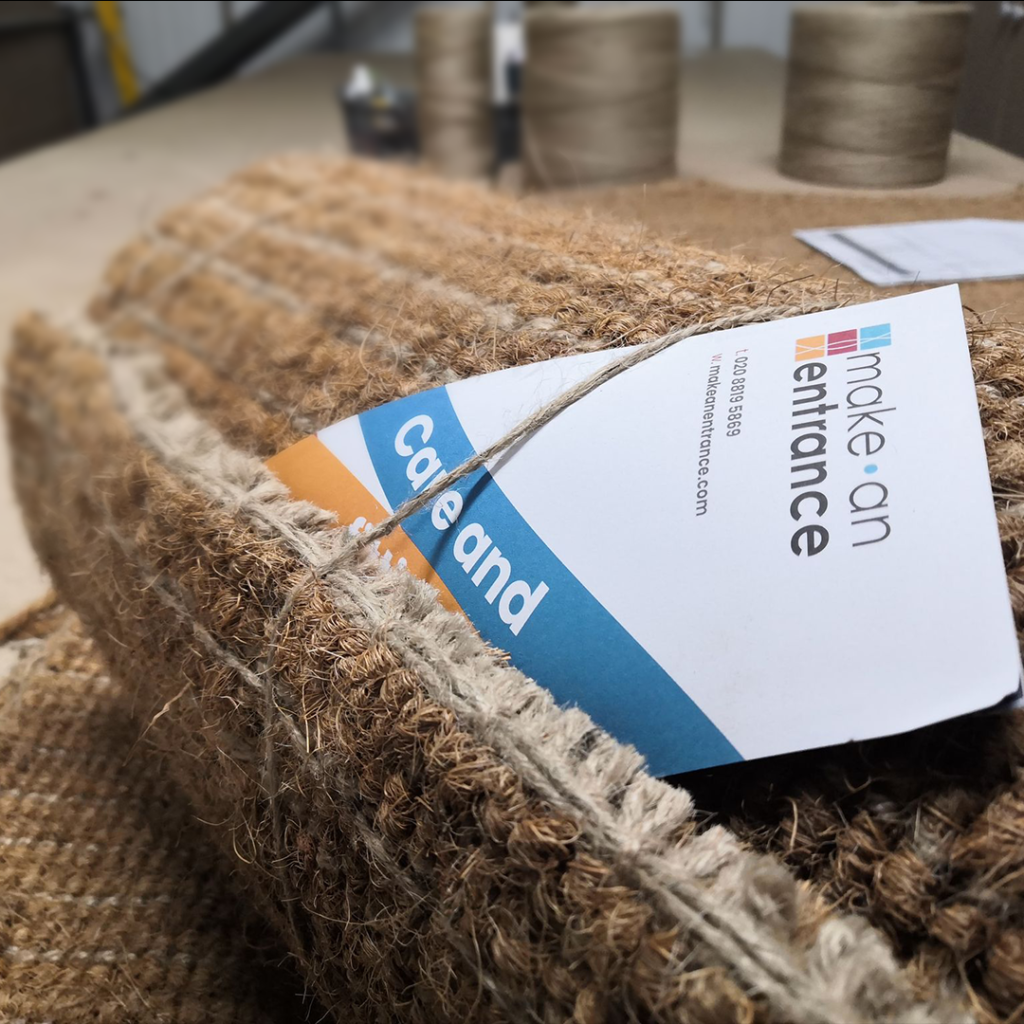
To ensure the longevity and effectiveness of coir mats, appropriate maintenance and care are essential. The cleaning method depends on the mud and dirt's condition (wet or dry), the duration of soiling, and the specific type of mat.
• For general maintenance, using a stiff brush effectively removes dried mud and dirt, it's important to ensure that all mud and marks are dry before attempting to remove them. Rubbing at wet mud will simply stain a coir doormat.
• Owners of printed coir mats should opt for gentler cleaning methods to protect the designs, avoiding vigorous scrubbing which could cause fading or damage. Additionally, regular vacuuming using the upholstery attachment can aid in removing loose dirt and preserving the mat's appearance.
Regular cleaning, whether through brushing or gentle vacuuming, combined with careful handling, is key to maintaining your coir entrance mat as a decorative and functional element of your home for many years.
Aesthetic Appeal
Renowned not only for their durability, a coir doormat significantly improves the aesthetic appeal of any home. The intrinsic beauty of these mats lies in their organic look, showcasing fibres that have a distinct, earthy charm. This natural appearance effortlessly complements a wide range of home decor, from classic to contemporary. Also, these mats are available in different colours and design variations, allowing homeowners to select options that perfectly match their personal style and the overall aesthetic of their home. The versatility of coir mats in terms of appearance and design ensures that they can seamlessly integrate into any setting, adding both elegance and warmth to the entrance of your home.
Considerations and Limitations
When it comes to maintaining coir door mats, it's crucial to consider their natural appearance and the range of different colours they come in. However, beyond aesthetic concerns, there are practical considerations to bear in mind.
Compliance With the Disability Discrimination Act (DDA)
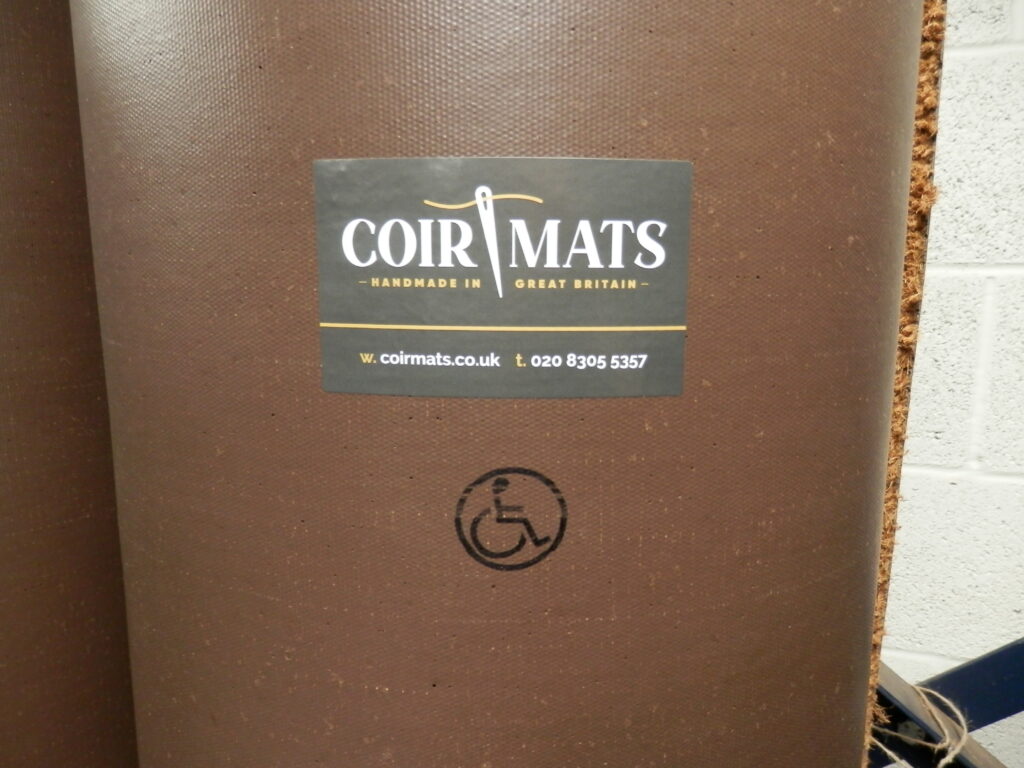
Business compliance with the Disability Discrimination Act is essential – ensuring that the mats do not become a tripping hazard or affect mobility for disabled people is essential. This involves regular checks for wear and tear and ensuring the mat lies flat against the floor.
Fire Safety Concerns
While coir mats are known for their durability, it's important to ensure they are kept away from direct heat sources to prevent any fire hazards. The natural fibres of coir can be flammable if not positioned correctly.
Issues of Wearing and Shedding
Lastly, the issues of wearing and shedding are inherent in coir door mats. Over time, these mats can shed fibres, especially in high-traffic areas, which could affect their natural appearance and efficiency. Buying the best quality mats and regular cleaning and gentle care can mitigate this to some extent, but it's important to be aware of this natural process and plan for replacement when necessary.
Conclusion
In summary, coir mats stand out in the entrance matting sector for their unique combination of a natural aesthetic and functional prowess, making them a prime choice for any household. This article has highlighted their key attributes, such as their eco-friendly composition from sustainable coconut fibres, durability, and visual appeal. Coir mats are especially suitable for high-traffic areas due to their proficiency in trapping dirt and moisture. Emphasising their balance between practicality and environmental consciousness, our final recommendation is to acknowledge the long-term advantages of choosing a coir mat. Not only does it show a commitment to eco-friendliness, but it also serves as a durable, stylish, and practical addition to your home, as evidenced by over 30 years of industry experience.
At Coir Mats, we are proud to have provided quality coir matting both domestic and commercial for over three decades, which is why we're trusted by companies and institutions all over the UK.
To learn more about how coir mats can compliment your doorway, contact us today!
FAQs
We've summarised some of the most frequently asked questions regarding coir mats, which we hope will answer any further queries:
Are coir mats suitable for all home styles?
Coir mats offer a natural look that can complement a wide range of home styles. Their rustic appearance works well with both modern and traditional decors, making them a versatile choice for any home.
Which coir matting is best for a mat well?
Cut-to-size PVC backed coir mats are recommended for mat wells. It's available in various colours and thicknesses and can be tailored to fit the well's dimensions.
